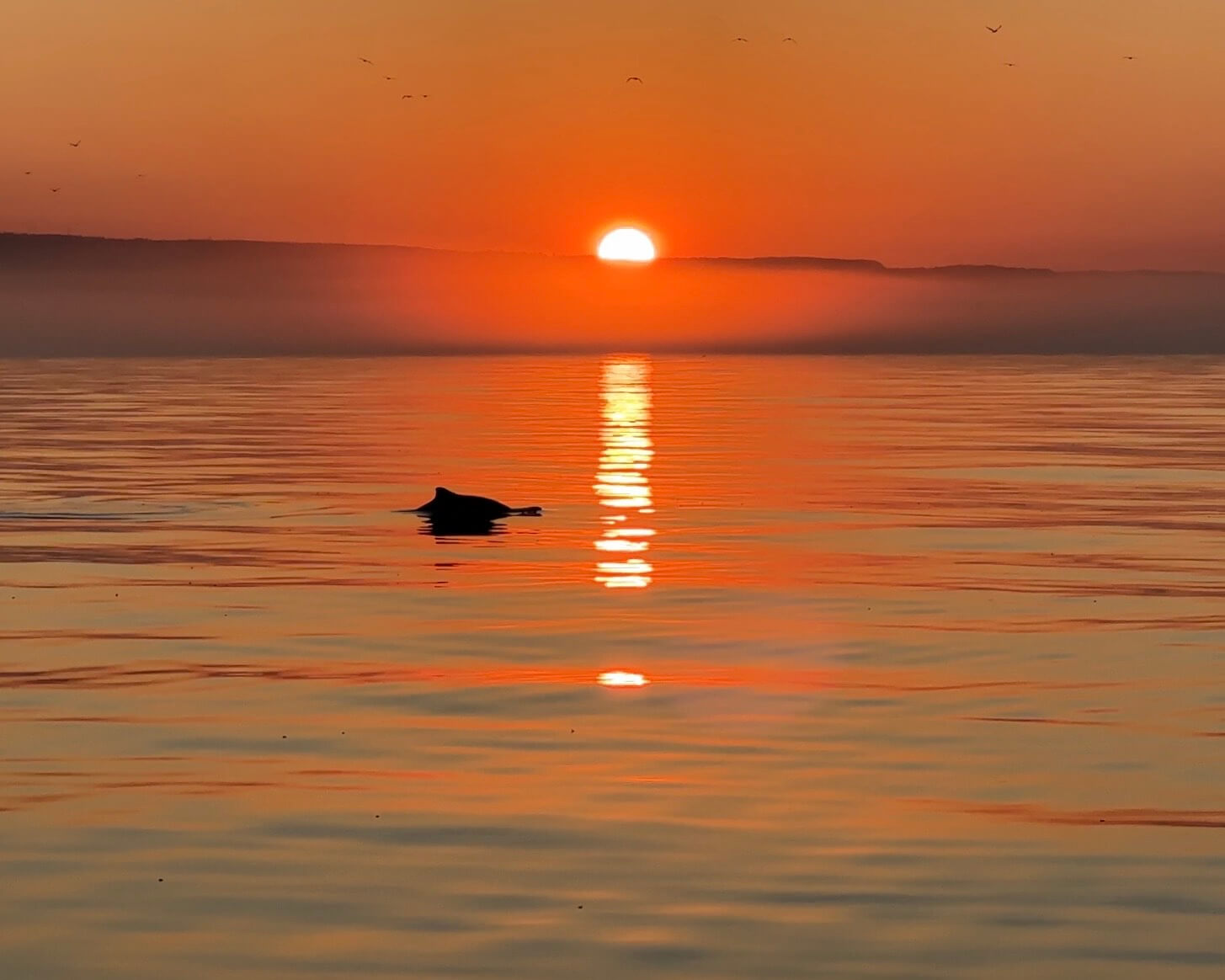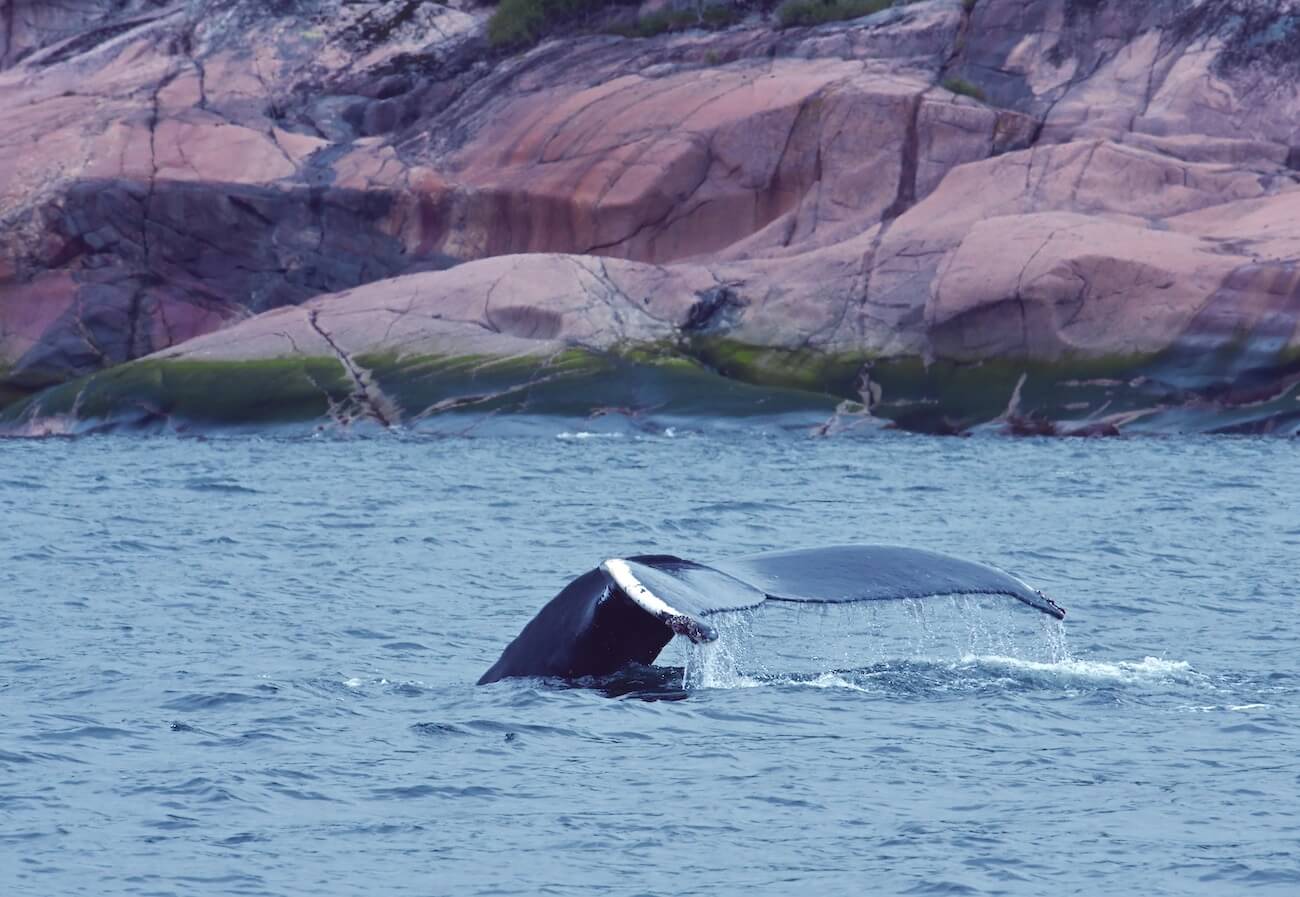The “fishermen” positioned nearly 3500 saplings in four days, though they purposely neglected to “set the trap” by making sure the saplings were far enough apart to avoid capturing a beluga. The weir was dismantled over the next few days.
In the following images, participants can be seen standing on the tidal flats. They are listening to Raynald Tremblay, who is explaining the details of this fishery of yesteryear.
For additional photos of this re-enactment, visit the Facebook page of the inn Auberge La Fascine. (in French). The event was filmed and will be the focus of an upcoming documentary.
Beginning in the 1700s, “white porpoises” – as belugas were known by inhabitants of the island – were trapped by the dozen using weirs. Weirs are composed of thousands of saplings arranged in the shape of the letter B, with an opening in the middle. Belugas entered the trap at high tide and remained trapped at low tide. This fishing method was practised in a number of villages and regions of the St. Lawrence Estuary including Île aux Coudres, Baie-Saint-Paul, Kamouraska, Rivière-Ouelle and Rivière-du-Loup. Derivatives of this fishery included high quality leather, which was used to make boots and laces. Blubber was transformed into oil and used as a lubricant for rifles and machinery.
Beluga hunting on Île aux Coudres ended in 1924. In 1962, islanders resurrected this fishery to safeguard the memory of the tradition in the documentary Of Whales, the Moon and Men (alternately screened in English under the title For the Ones to Come) by Pierre Perrault and Michel Brault. This film can be viewed on the National Film Board of Canada website. Moreover, in 2012, island residents marked the 50-year anniversary of the production by inviting co-director Michel Brault.
Although not a single beluga was spotted during this re-enactment, several groups had been reported in the mouth of the Saguenay in the two weeks prior. Belugas were gradually returning to their summer grounds which lie primarily in the Estuary – between Forestville (Côte-Nord), Le Bic (Bas-Saint-Laurent) and Île aux Coudres (Charlevoix) – and in the Saguenay Fjord.
To learn more:
about whaling in the St. Lawrence





